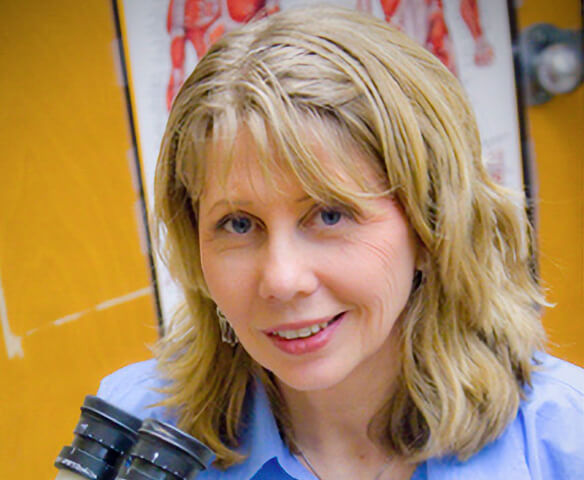



Deborah Anderson is a professor of biology who is dedicated to promoting the growth mindset in her students. She trains students to use retrieval-based practices to learn material deeply – a technique which prepares them for success in professional programs and careers post-graduation. Anderson’s research focuses on ischyromyid and sciuravid taxonomy and evolution. She is currently writing an illustrated guide to the Bighorn Basin ischyromyids.
Anderson, D.K. 2023. Systematics of late Paleocene and early Eocene (Wasatchian) Rodentia (Mammalia) from the Willwood Formation, Bighorn and Clarks Fork Basins, Wyoming" (to be submitted to the University of Michigan, Papers on Paleontology series)
Sims, M.E., Jones, M.F., Czaplewski, N.J., and Anderson, D.K. 2023. Rediscovered lost holotypes of two Paleogene mammals and a Miocene bird from North America. (to be submitted to the Journal of Vertebrate Paleontology)
Anderson, D.K. 2023. Recently discovered specimens of Acritoparamys and Franimys highlight the differences between these two genera, known from the early Eocene of the Bighorn Basin, Wyoming. (Plan to submit MS to Journal of Paleontology)
Anderson, D.K., Schoenleber, M., and Korshavn, S. 2023. Higher order clicker questions engage students and prepare them for higher order thinking activities. JMBE 6 February.
Korth, W.W., Boyd, C.A., Person, J.J., and Anderson, D.K. 2022. Fossil mammals from ant mounds situated on exposures of the Big Cottonwood Creek member of the Chadron formation (Latest Eocene-Early Oligocene), Sioux County, Nebraska. Paludicola 13(4): 191-344.
Anderson, D.K. 2017. Three new sciuravids (Rodentia) from the latest-early to middle Eocene of Wyoming: mosaic evolution and the alpha taxonomy of Sciuravus nitidus. Contributions from the Museum of Paleontology, University of Michigan. 32(12): 245–258.
Anderson, D.K. 2015. New specimens and neotype designation of Thisbemys brevicrista, (Rodentia, Ischyromyidae) from the middle Eocene clarify the distinction between T. corrugatus and T. plicatus. Journal of Paleontology, 89: 318–330.
Anderson, D.K. 2014. Creative teaching models for the innovative faint of heart. Journal of Microbiology and Biology Education, 156-63.
Anderson, D.K. 2008. Ischyromyidae: pp. 311-325 in C. M. Janis, G. Gunnell, and M. D. Uhen (eds.), Evolution of Tertiary Mammals of North America: Vol. II. Cambridge University Press, New York.